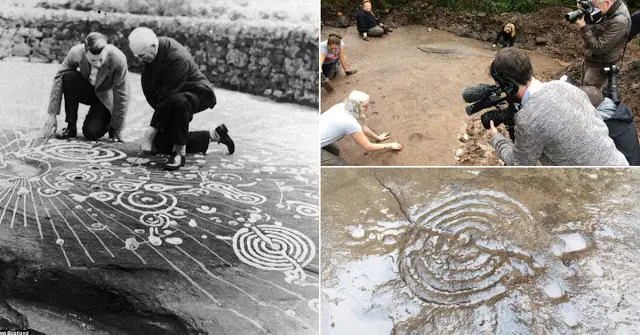
The ancient Cochno Stone in Scotland has around 90 intricate spirals, and some authors believe it represents an ancient cosmic map. The discovery of the 5,000-year-old mysterious stone in 1887 has been considered as one of the greatest discoveries in archaeology.
Regarded as one of the most impressive sets of petroglyphs, many researchers believe they represent a cosmic map that provides details of planets and stars. Rev. James Harvey discovered it in 1887, and in 1965, archeologist Ludovic Maclellan Mann buried the massive slab to protect it from damage and prevent people from vandalizing into it.
Archaeologists still can’t tell what is correctly indicated on the large piece. The complex symbols could be a map of the sky or the earth, or perhaps an altar where rituals were held.
Some suggest the slab is a portal of life and death and symbolizes rebirth.
Others theorize that the intricate drawings of rings, lines, and domes are an old expression of rock art that has been discovered in many other parts of the world.
Researcher Alexander McCallum proposed that it is a map depicting other settlements in the Clyde Valley.
The unusual markings are often linked to crop circles that are known to be the works of alien civilizations. Other similar slabs have been interestingly found in the north of Spain, Greece, Mexico and even in India.
There have been hundreds of other proposed explanations to the intricate drawings, including border boundary signs, common symbols, cosmos representation, and among others, but the mystery remains until today as to what messages the stone contains.
Experts are planning to digitally map the stone to shed more light on its history, purpose and the one who created it around 5,000 years ago.


‘Crop circles known to be the work of Aliens?’ How do we know that?
THOUGHT to be, but there are many proven hoaxes.